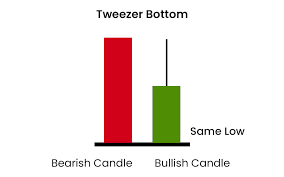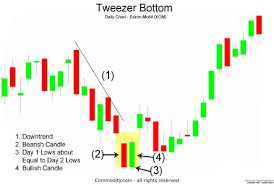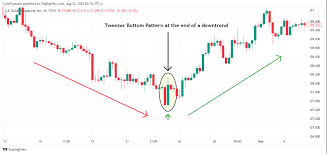Introduction
Identifying market lows is key for traders looking to enter positions at the best price. The Tweezer Bottoms patterns is a candlestick formation that signals potential market bottoms. This article will guide you through understanding and using the Tweezer Bottoms pattern.
Understanding the Tweezer Bottoms Pattern
The Tweezer Bottoms patterns consists of two or more consecutive candlesticks with matching or nearly matching lows. It indicates that the market is finding support, suggesting a reversal from a downtrend to an uptrend.

How to Identify Tweezer Bottoms
Look for two or more candlesticks with equal or nearly equal lows, especially after a prolonged downtrend. The first candle is usually bearish, followed by a bullish candle, showing a shift in market sentiment.

Why Tweezer Bottoms are Important
This pattern is essential because it signals that sellers are losing strength, and buyers are stepping in, making it a valuable tool for identifying potential market bottoms.
Using Tweezer Bottoms in Trading
Traders can use Tweezer Bottoms to enter long positions or exit short positions, particularly when confirmed by other indicators like volume or moving averages.
Real-World Examples Example: During a bear market, a Tweezer Bottoms patterns formed at the low of an energy stock, signaling the start of a recovery. Traders who recognized this pattern and went long saw significant gains.

Psychological Aspect The Tweezer Bottoms pattern reflects a battle between sellers and buyers, with buyers ultimately gaining control, leading to a price reversal.
Limitations Tweezer Bottoms may produce false signals in sideways markets, so traders should confirm with additional analysis.
Conclusion
The Tweezer Bottoms pattern is a reliable tool for identifying market lows. By understanding and using this pattern, traders can better time their entries and capitalize on market recoveries.
you may be interested in this blog here:-
Full Stack Development Salary in India – 2024 Trends and Insights
Salesforce Developer Salary in India An In-Depth Analysis




